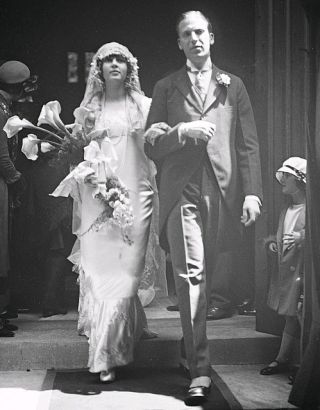Marriage
Is Marriage in Decline?
The percentage of unmarried Americans is approaching an all-time high. But why?
Posted March 7, 2015

Marriage is in retreat worldwide.
Across the globe, increasing numbers of women and men are not simply postponing marriage, but forgoing it altogether. Among women in their late 30s or early 40s, 29 percent are unmarried in Denmark; 18 percent in Italy; 22 percent in Lebanon; and 32 percent in Libya.
In the United States, one in six women remains unmarried in her early forties. This is about the same proportion as in Japan, and is approaching its highest-ever rate in the US.
For the first time in American history, a majority of adults now live outside of marriage—as single parents, as partners in a cohabitating relationship, or as singles.
In short, the institution within which childbirth, childcare, and childrearing once nearly exclusively took place is giving way to far more diverse arrangements. In the US today, two in five births are to unwed mothers.
A century ago, those who lived outside of marriage usually did so because of desertion or the premature death of a spouse. Today, in stark contrast, the leading causes are divorce, separation, cohabitation, or the simple desire to remain single.
What lies behind the flight from marriage?
Is it a “me ethic,” as a piece in The Wall Street Journal recently suggested, rooted in a yearning for personal freedom, self-actualization, and self-sufficiency—and an aversion to sacrifice? Or are other forces at play?
Several factors are at work. These include new economic realities which no longer require women to marry for financial reasons; new gender norms, which undercut past notions that a husband should head his household and his wife should subordinate her needs for his; higher expectations about the level of intimacy, companionship, communication, and sexual fulfillment that marriage is expected to deliver; and a deepening ambivalence about the institution itself.
This ambivalence takes many forms. For some, it is a sense that marriage is a relic of patriarchy that demands disproportionate sacrifices from women. For others, it is a belief that marriage is outmoded, too limiting, and fails to allow individuals the freedom to grow. Still others are repelled by the dysfunctions found in too many marriages. A recent Pew Research Center poll found that half of all adults felt that there was no harm to society if people had higher priorities than marriage or children.
The retreat from marriage carries profound, but unpredictable, consequences. One of marriage’s historic responsibilities has been to provide care to the young and the elderly. Among the great challenges of our time is to develop institutions that can build on the strengths and minimize the weaknesses of today’s diverse households.
Despite high rates of divorce and unmarried cohabitation, the overwhelming majority of American adults do still marry—and expect their marriages to last. Marriage remains our society’s most potent symbol of commitment and love. Marriage is, of course, also a legal status, bound up with more than a thousand rights and protections, including tax, medical, Social Security, disability, and veterans’ benefits. Marriage also has substantial economic benefits, at least when combined earnings outweigh the other costs that a bad partner can impose.

But marriage, more than ever, is an affective relationship, largely judged in terms of the satisfaction and sense of fulfillment it offers.
For most adults, marriage is the most sustained and intense intimate relationship they will ever have. Yet even as the expectations invested in marriage have risen, relationships have become more problematic. Today’s couples actually spend less time interacting with each another or even with mutual friends than did their counterparts in the 1950s, reflecting the increased amount of time devoted to work. Lacking clearly defined norms, couples must negotiate for themselves how to divide family roles and responsibilities—a particular problem within second marriages.
Marriage is a relationship enveloped in romantic fantasy, but in real life, it is one in which couples must undertake one of life’s most difficult tasks—negotiating issues of power, authority, and decision-making, over many years. No wonder so many falter.


